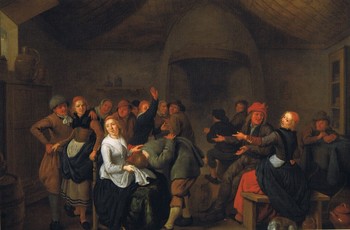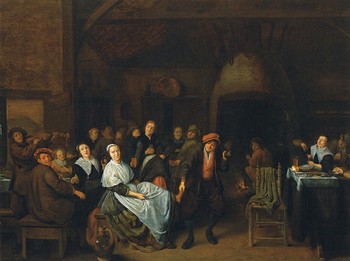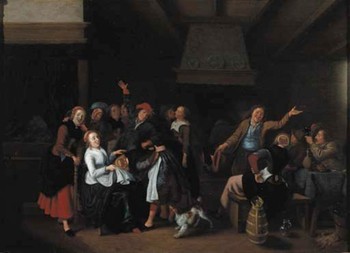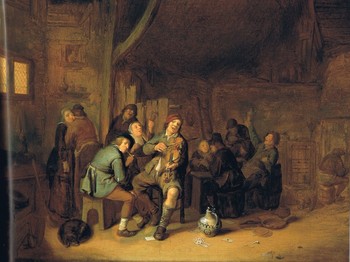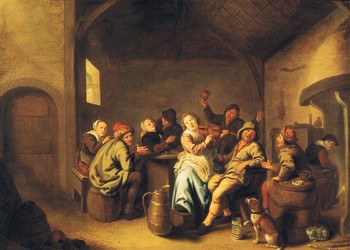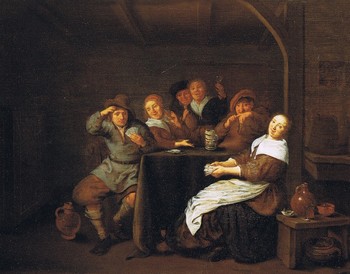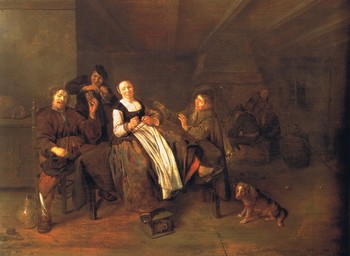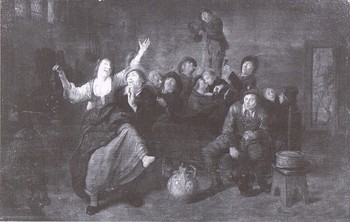Jan Miense Molenaer
Boors playing la main chaude in a tavern
Oil on panel : 40,4 X 55,8 cm
Signed centre left “JMolenaer”
(JM in ligature)
Sold at Christie’s Amsterdam, 6/11/00
For 42.481 €
This is a comparative item
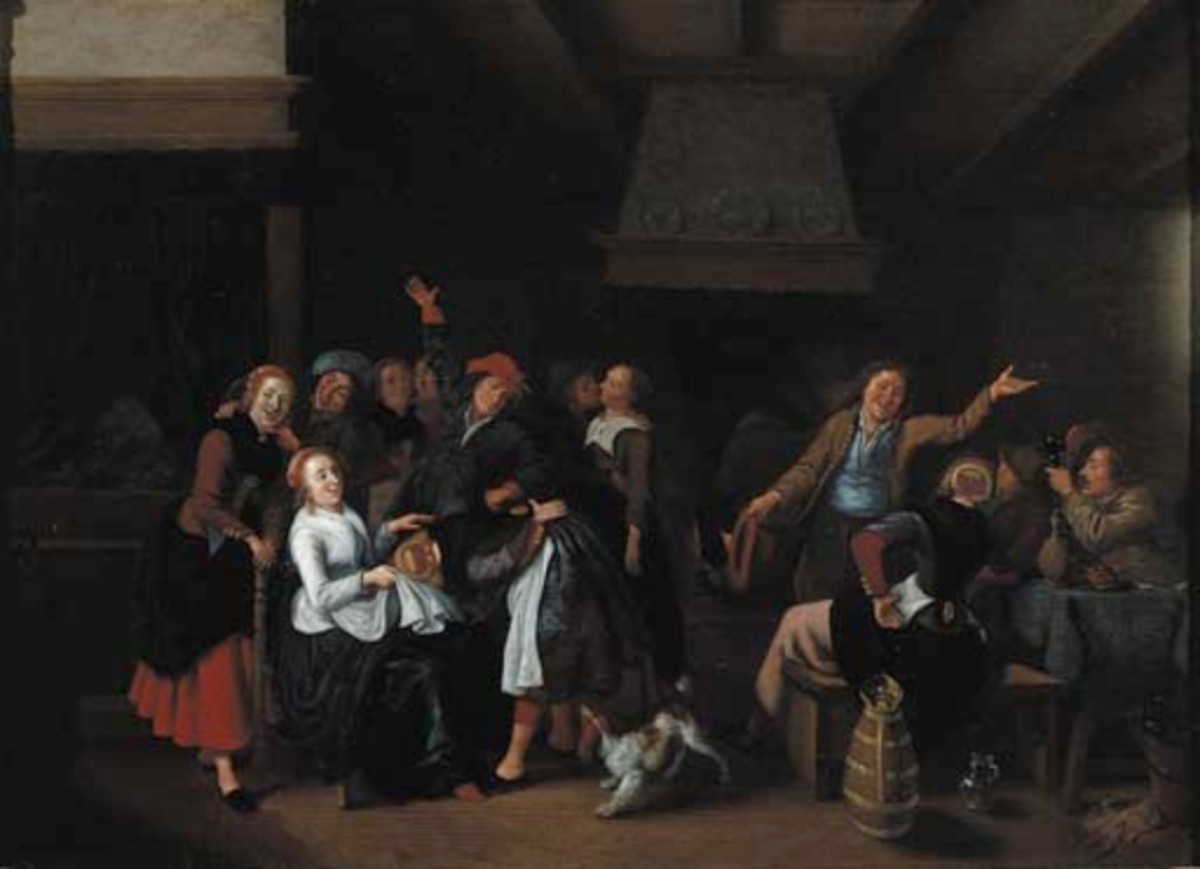
Painting for Sale
Molenaer, Jan Miense
"A merry company in a tavern"
Comparative paintings
Click photos for more details

